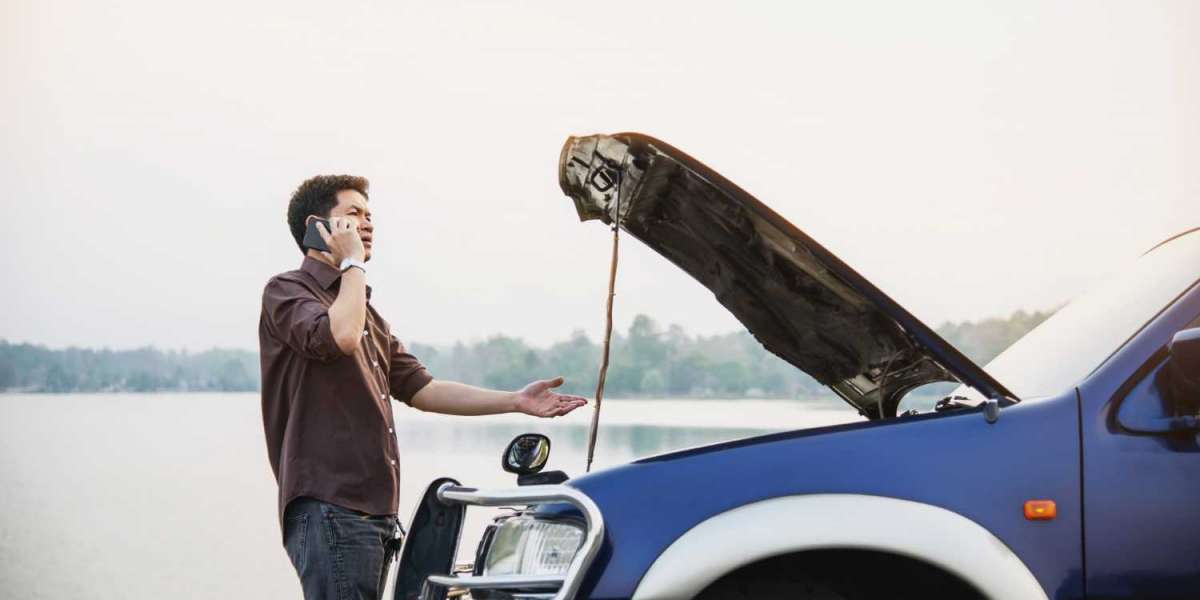A vehicle breakdown can quickly disrupt your day—whether you're commuting to work, heading out on a trip, or just picking up groceries. When your car refuses to start or becomes unsafe to drive, you're often faced with an urgent question: What now?
Many drivers think the only solution is to call for a tow truck or roadside repair. But in some situations, car transportation services offer a better, safer, and more flexible option—especially when dealing with long distances or extensive repairs.
In this article, we’ll explore how to decide whether car transport is the right choice after a breakdown, how it compares to recovery or towing, and when it makes the most sense.
What to Do Immediately After a Breakdown
If your car breaks down, your first priority is safety.
Move the vehicle to a safe location if possible (e.g., a hard shoulder, side street, or service station).
Turn on your hazard lights.
Place a warning triangle behind the car if you’re on a slower road.
Stay clear of traffic and call for help.
While roadside assistance can often provide quick solutions, some situations require more than a jump-start or tire change. If your vehicle is seriously damaged or you're far from home, transportation might be the smarter long-term solution.
Before deciding on car transportation services, assess your vehicle’s condition, location, and whether local repair is possible—or even practical.
What Are Car Transportation Services?
Car transportation services specialize in moving vehicles from one location to another using a flatbed truck, trailer, or enclosed carrier. While often used for shipping cars during relocation or for dealership delivery, they’re also valuable in breakdown situations.
Instead of towing your car a short distance to the nearest garage, transport services can deliver your vehicle directly to your preferred repair shop or home—even if it's in another city. This approach minimizes handling, reduces the risk of further damage, and gives you more control over where your car goes.
Car Transportation vs. Recovery or Towing
It’s important to understand how car transport differs from standard recovery options:
Car Recovery typically refers to emergency roadside assistance or towing services. A recovery operator might jump-start your battery, fix a flat, or tow your vehicle a short distance to a local garage.
Towing involves using a tow truck to pull or lift your vehicle—often a quicker but rougher method of transport suited to short journeys.
Car transport offers a smoother, more secure solution, especially for non-drivable vehicles or long distances.
For example, if you're on holiday and break down far from home, you might not want your vehicle repaired locally. A recovery team may help initially, but scheduled transportation can deliver the car back to your trusted mechanic—making it a more reliable long-term fix.
When to Choose Car Transport After a Breakdown
Here are scenarios where car transportation may be the better choice:
You’re far from home: The local garage isn’t ideal, or you’d prefer your mechanic back in your city.
Your car requires major repairs: The garage may need special parts or diagnostic tools that aren’t available locally.
Your vehicle is valuable or delicate: Classic, luxury, or modified cars often benefit from enclosed transport options.
Your breakdown occurred in a remote location: Recovery services may not be equipped for long hauls or complex routes.
In all these situations, car transport gives you flexibility, convenience, and peace of mind.
Advantages of Using Car Transport Post-Breakdown
Damage prevention: Transport carriers reduce wear and risk of additional damage, especially compared to traditional towing.
Convenience: Arrange pickup and delivery based on your schedule and destination of choice.
Long-distance capability: Ideal for situations where the recovery distance is too far for standard tow trucks.
Specialized handling: Transport companies often cater to unique vehicle types with advanced equipment.
While Car Recovery services are great for emergencies, transport is often a better follow-up plan when repair timelines are long or locations are inconvenient.
How to Arrange Transport After a Breakdown
If you’ve already called roadside assistance, ask if they offer transport services or can recommend a trusted provider. Many breakdown recovery Luton companies, for example, offer both local recovery and long-distance transport options.
To arrange transport:
Contact a provider and explain your situation.
Share details like your car’s make/model, current location, destination, and whether it’s driveable.
Request a clear quote, including any potential surcharges.
Confirm insurance and transport method (open vs. enclosed carrier).
Many transport companies offer quick turnaround—even same-day service if needed.
Things to Consider Before Choosing Car Transport
Will your vehicle be left unattended? If so, make sure it’s in a secure location.
Can the transport company access your pickup and delivery locations easily?
Is the cost of transport justified compared to local repairs?
Will your insurer cover any or all of the transport costs?
Always double-check the credentials and reviews of the company you choose.
Conclusion: Make the Right Move for Your Car
A breakdown doesn’t have to mean you're stuck with the nearest garage or waiting endlessly for a fix. In many cases, arranging professional car transportation services after a breakdown offers more flexibility, better protection for your vehicle, and control over your repair options.
Whether you’ve broken down close to home or on the other side of the country, consider your long-term plans for your vehicle. Sometimes, calling a Car Recovery team is step one—and booking reliable transport is step two.
Next time you're in a tough spot, think beyond towing. Transport might just be the better road forward.








